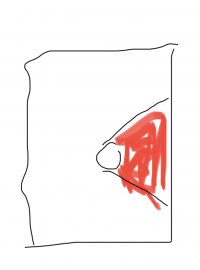Given the pictured anchoring arrangement, suppose each bolt diameter is 3/8ths and the plywood is 1/2" thick, then each bolt exerts load on 0.375"*0.5" = .1875" square inches of plywood edge * 900lbs psi shear strength from Matweb (midpoint of range provided above) means the failure would happen at 168.75lbs for a single bolt.
168.75*8 bolts = 1,350lbs for the smaller plate
168.75*14 bolts = 2,362.5lbs for the larger plate.
I expect some engineer can check my math - I think it's in the ballpark, however.
I wonder about how one measures failure loads for custom-fiberglass tabbing. If the plywood flexes out of plane, I think expect it would fail much faster.




